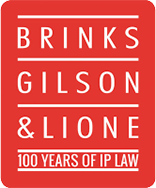Brief Background
The U.S. Supreme Court has struck down the Lanham Act’s ban on "scandalous" and "immoral" trademarks on the grounds that the provision violates the First Amendment because it constitutes viewpoint discrimination. Iancu v. Brunetti, No. 18-302 (slip opinion) (June 24, 2019).
Mr. Erik Brunetti sought to register the word mark "FUCT," in connection with clothing. The examining attorney at the United States Patent and Trademark Office ("USPTO") refused registration under Section 2(a) of the Lanham Act, on the basis that the mark was vulgar, and therefore "immoral" or "scandalous." The Trademark Trial and Appeal Board ("TTAB") upheld the examining attorney’s decision on appeal. Mr. Brunetti then appealed the TTAB’s decision to the Federal Circuit. The Federal Circuit requested additional briefing from the parties following the Supreme Court’s decision in Matal v. Tam, 137 S.Ct. 1744 (2017), which held that Section 2(a)’s prohibition on registering "disparaging" trademarks is unconstitutional under the First Amendment. In December 2017, the United States Court of Appeals for the Federal Circuit issued a unanimous ruling declaring unconstitutional Section 2(a) of the Lanham Act, 15 U.S.C. § 1052(a), which prohibits the registration of "immoral" or "scandalous" trademarks. On January 4, 2019, the Supreme Court granted certiorari to the USPTO, which is seeking to restore Section 2(a)’s ban on "scandalous" and "immoral" marks.
Supreme Court Decision
The majority decision held, much as it did in the Matal v. Tam decision, that the Lanham Act’s prohibition of "scandalous" or "immoral" marks violates the First Amendment. The Court rejected the USPTO’s argument that Section 2(a)’s requirements are properly viewpoint-neutral. Specifically, the Court noted that, in evaluating whether the mark at issue is immoral or scandalous, the USPTO asks whether the public would view the mark as "shocking to the sense of truth, decency, or propriety"; "calling out for condemnation"; "offensive"; or "disreputable." Citing Jerome Gilson of Brinks Gilson & Lione and Anne LaLonde’s article, Trademarks Laid Bare, 101 Trademark Reporter 1476, 1510-1513, 1518-1522 (2011), the Court noted that the USPTO has refused to register marks that communicate "immoral" or "scandalous" views about drug use, religious, and terrorism, while approving for registration marks expressing more accepted views on the same topics. As such, the Court stated that the "immoral" and "scandalous" marks ban cannot be viewpoint neutral.
The Court also rejected the USPTO’s request to uphold a narrower interpretation of the law, namely to restrict Section 2(a) to lewd, sexually explicit, or profane marks, on the basis that the Court’s role is to "interpret the statute that Congress enacted," not to craft a new one. Here, the majority’s view differed from the dissent authored by Justice Sotomayor, who opined that the word "scandalous" can be read more narrowly to cover only offensive modes of expression – regulating only "obscenity, vulgarity, and profanity", which would save Section 2(a) from unconstitutionality.
Implications
Interestingly, both the majority opinion, as well as the concurrence and dissents, suggested that a future law limited merely to "lewd, sexually explicit, or profane marks" might survive constitutional muster. In the meantime, such trademark applications are likely to register provided they meet the remaining statutory requirements for registration.




 />i
/>i

